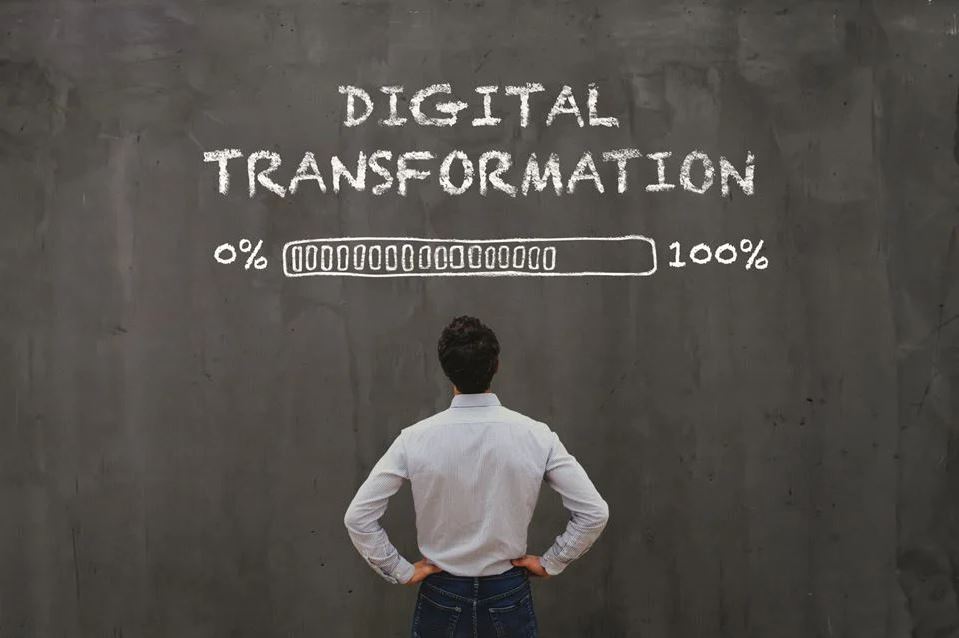Digitalization is about delivering the same as before, but now with the help of digital technology. Such as digitalization of the bank. Digital transformation is about the new technology making it possible for us to deliver something completely different than what was possible before. It thus creates a change in the company - a transformation - because they no longer deliver the same as before, but something completely new.
Digitalization and digital transformation are concepts that are thrown around and used interchangeably, whether it’s in parliamentary reports, consulting reports, or in the media. The World Economic Forum (2017) argues that digital transformation is now essential for profitability in both the private and public sectors. We have an intuitive understanding of the concepts, but when we ask what they mean and if there is a difference between digital transformation and digitalization, people become silent.
We find that the concepts are often not defined and lack a good description. This can lead to misunderstandings and, in the worst case, companies can make completely wrong strategic choices because they do not understand the difference - companies can invest money in digital transformation that should have been used for digitalization instead.
Through research at SINTEF, we show how digitalization and digital transformation are related and how they affect organizations differently.
Digitalization can be understood as the measures taken to improve or change business processes through task automation. Digitalization is not a new topic, programmable punch card technology has actually been used since the early 1700s to automate weaving.
By digitizing business processes, more data is captured which, in turn, can be used to further improve and make these processes better using digital technology such as artificial intelligence (AI).
The new data also makes it possible to create completely new and unknown ways of delivering value, through innovation and the establishment of new business areas, also known as digital transformation.
Netflix started as a DVD supplier, where customers received DVDs in the mail. Instead of having to go to Blockbuster, then look up a movie, rent it, and finally return it, the customer automatically received the next DVD on their list when the previous one was returned. That way, you always had a new DVD to watch.
Later, Netflix started streaming movies directly to users, instead of having to send DVDs back and forth. This was, simply put, a digitization of receiving DVDs in the mailbox.
By automating manual processes, Netflix gained access to enormous amounts of user data; what they watched, how long they watched, what they liked or didn’t like, and even which scenes and parts of the movies were most interesting.
Previously, Netflix had received sporadic data from reference groups and surveys. Based on the knowledge available in the data about what people liked, the company began producing and further developing its own films and TV series, and one must not forget that traditional suppliers such as HBO and Disney started their own streaming services.
Netflix then went from being a digitized DVD supplier to also being a TV and film studio that created content based on the data they had about their customers. By changing their business model, based on data, they became a digitally transformed film and TV company.
Netflix carried out its own digitization and digital transformation by developing new technology themselves, but most companies and organizations use technology developed by others. What is important then is how to interact with those who develop the technology. Through research on technology startups at Iterate, we have been able to follow several startups that are trying to digitize different areas of society: everything from how to use machine learning to detect ships, to how to better involve users in the development of digitized solutions.
A highly relevant example of digitization and digital transformation can be found in healthcare. Today, we use helsenorge.no and other services to interact with doctors, order doctor’s appointments, and get prescriptions. Furthermore, we also see that work is being done to digitize the treatment process itself.
At SINTEF we have followed FlowZone (one of Iterate’s startups) which has worked on both digitizing and digitally transforming patient rehabilitation. By working smoothly and thoroughly with both patients and caregivers, FlowZone develops a digitized rehabilitation solution for patients and caregivers. The effect of digitally supported interaction and follow-up is shorter stays in rehabilitation institutions and less risk of relapse.
This digitization of the rehabilitation plans and the interaction process not only provided data on whether the plan was followed by the patient. It also provides unique data and insight into whether the treatment and rehabilitation itself works; thus digitally transforming how treatment and rehabilitation are performed. This allowed them to change the treatment and rehabilitation methodology, supported by the digitized and close interaction between caregivers and patients, and not least utilizing technologies that patients already use and are familiar with - such as Apple Watch and Garmin watches. In short, treatment and rehabilitation were digitally transformed.
We find that the concepts are often not defined and lack a good description. This can lead to misunderstandings and, in the worst case, companies can make completely wrong strategic choices because they do not understand the difference - companies can invest money in digital transformation that should have been used for digitization instead.
So what is most important to you, digitization, digital transformation, or both? Our research shows that both are important and that they are related, but companies must balance how they work with digitization and digital transformation at the same time.
Furthermore, we see that those who succeed in balancing digital transformation and digitization do the following: 1) have an organization that works agilely, 2) work on how to capture and quality-assure data, and not least 3) develop technology that uses data, such as artificial intelligence.
Even after 300 years of experience in digitization, more research is needed on practical, organizational, and legal issues. Through the projects 10x-Teams, Digital Class, and Transformit, we will find more answers on how to succeed.



